|
Pomacea paludosa (Say, 1829)
|
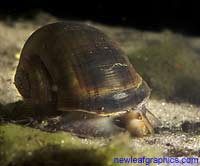 Pomacea paludosa, the Florida / cuba apple snail. (picture not licenced under creative commons) |
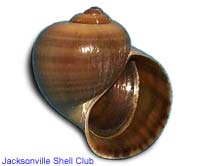 Pomacea paludosa. (picture not licenced under creative commons) |
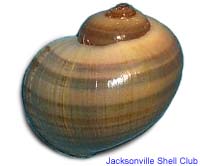 Pomacea paludosa. (picture not licenced under creative commons) |
 Pomacea paludosa. (picture not licenced under creative commons) |
 Pomacea paludosa. (picture not licenced under creative commons) |
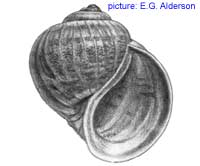 Pomacea paludosa. (picture not licenced under creative commons) |
Shell: globose; shell opening (aperture)
large, oval, large and deep umbilicus; 40-55 mm wide, 45-65 mm high.
Colour: yellow to green with reddish streaks, dark spiral bands.
Operculum:
Body: Pale grey foot, with black pigment on the upper side of the body.
Eggs: The white to slightly pinkish eggs are laid on emerging stems of
vegetation. The clutches of 10 to 80 eggs, are losely packed together.
Compared with mmany other Pomacea species, the eggs of Pomacea paludosa
are relatively big, about 3 to 6 mm diameter.
The young snails appear after 2 or more weeks and drop into the water. Due to
their relatively big size when born, these snails are less sensitive to desiccation
than their smaller counterparts of other species like Pomacea flagellata.
An important advantage given the conditions that occur in their habitat (swamps).
A similar egg strategy has been observed in Pomacea urcues,
which inhabits temporary water bodies in the Venezualan savanna.
 Pomacea paludosa, the Florida / cuba apple snail. Female depositing her eggs on a branch. (picture not licenced under creative commons) |
 Pomacea paludosa, the Florida / cuba apple snail. (picture not licenced under creative commons) |
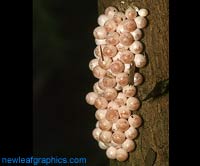 Eggs from Pomacea paludosa. Size of the eggs: 3 - 6 mm. (picture not licenced under creative commons) |
 Pomacea paludosa hatchlings between the remnants of the eggs. (picture not licenced under creative commons) |
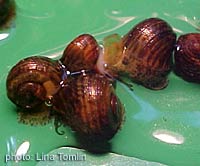 Pomacea paludosa hatchlings. (picture not licenced under creative commons) |
Behaviour: amphibious animal; submerged during the day, hidden in the
vegetation near the border and the surface. More active during the night, also
leaves the water in search for fresh vegetation.
When disturbed they let themselves fall on the bottom to hide in the mud.
Distribution: south-east U.S.A. (Florida) and Cuba. Has recently spread
to Hawaii (only local populations). Pomacea paludosa can be found
in the aquarium trade, although not very common.
Fossil records: Fossil Pomacea paludosa shells can be found in
the Bermont formation in Florida (Pleistocene).
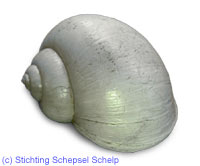 Fossil shell of Pomacea paludosa, from the Bermont Formation (Florida, USA, middle Pleistocene: 800.000-200.000 years ago). (picture not licenced under creative commons) |
Thanks to newleafgraphics.com, The Jacksonville Shell Club and Stichting Schepsel Schelp for the use of their photographs.
|
Except where otherwise noted, this page is licensed under a Creative Commons Attribution-NonCommercial-ShareAlike 2.5 License . http://www.applesnail.net |
|